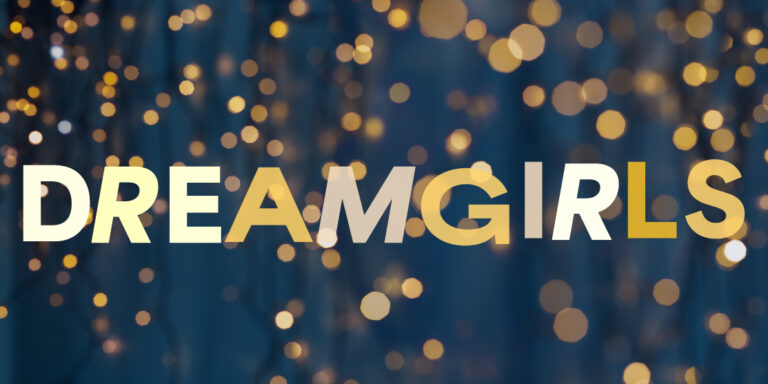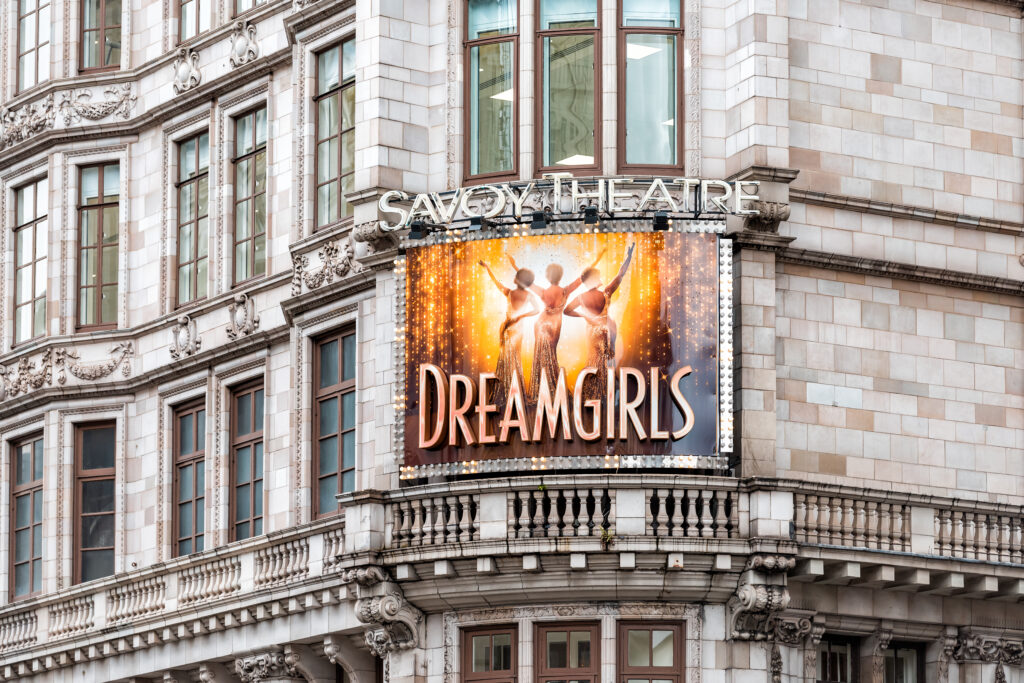
From the desk of Atiya Mansfield
In honor of Black History Month, the Neuger team shared a beautiful lunch from Wendy’s House of Soul and watched the 2006 hit movie Dreamgirls, continuing our yearly tradition of celebrating a piece of iconic Black media. Taking time to watch and understand artistic expressions of the Black experience is important because it gives more insight to the culture. Often, when people discuss historical Black figures, they stick to what they learned in school – when in reality Black history is so much more nuanced and complex. Dreamgirls, the iconic Broadway musical and blockbuster film, is a fantastic example of cultural impact in the realm of theatrical productions, not only for its storyline and score, but for its representation of the stories of Black artists during the early 60s and beyond.
Who are The Dreams?
Dreamgirls is a story about the journey of a fictional girl group, The Dreams, that not only dives into the racism, plagiarism and discrimination Black musicians faced while working in music, but the intersectional issues Black women faced in the business. One central theme that comes to light as The Dreams gain traction is their struggle to appeal to a predominantly white audience. While The Dreams themselves are fictional characters, their challenges reflect real-life struggles faced by many Black artists striving for success in the mainstream, which was almost entirely white.

Through a Looking Glass
Many of the characters in both the musical and the movie mirror the lives of real life artists.
• The Dreams = The Supremes
• Jenifer Hudson as Effie White = Florence Ballard (The original lead vocalist of The Supremes), Etta James
• Beyoncé Knowles as Deena Jones = Dianna Ross
• Eddie Murphy as Jimmy Early = Frankie Lymon, James Brown, Ike Turner, Marvin Gaye
• Jamie Foxx as Curtis Taylor Jr. = Berry Gordy Jr. (founder of Motown Records)
The characters in Dreamgirls not only mirrored the professional lives of The Supremes, but also their personal lives. Jennifer Hudson’s character, Effie, used to be the lead vocalist in the trio, until Beyoncés character, Deena, became more favored at the peak of their career by Curtis Taylor Jr., played by Jamie Foxx. The Supremes had a similar falling out. The original lead vocalist Florence Ballard was removed from the group after Berry Gordon Jr. started favoring Diana Ross. When you think about it, where the inspiration was pulled from wasn’t subtle at all – to the point that Diana Ross herself was not happy about the creation of the original Broadway show.
Rainbow Records ≠ Motown Records
Rainbow Records in Dreamgirls, like many other aspects of the movie, reflects reality. In this case Motown Records, which was founded in 1959 by Berry Gordon Jr., a former Ford assembly line worker, in Detroit, Michigan. Motown Records has produced some of the biggest names in music both in the past and present, just some of which include Smokey Robinson and the Miracles, The Supremes, Marvin Gaye, Jackson 5, Stevie Wonder and The Temptations.

The Dreams of the Past, Present, & Future
Past
The original Dreamgirls was a broadway musical written and produced by Henry Krieger and Tom Eyen. Opening on December 20, 1981, the original production featured actresses Sheryl Lee Ralph, Jennifer Holiday and Loretta Devine. The original production received 13 Tony nominations and took home six wins, including Best Actress in a Musical (Jennifer Holiday as Effie White) and Best Choreography (Micheal Bennett, the creator and choreographer of “A Chorus Line” and Micheal Peters, choreographer of Micheal Jackon’s hit songs “Beat It” and “Thriller”). It’s important to note while I was trying to find biographies the best I could find for Peters was Wikipedia. The production opened at the Imperial Theatre, a venue that has had many other critically acclaimed productions open on its stage, such as Kiss Me Kate, Fiddler on The Roof and the American production of Billy Elliot. Dreamgirls had over 1,000 shows before its closing in 1985, but soon had a revival production in 1987.
The 2006 movie can be seen as the show’s second revival and featured big names, such as Beyoncé Knowles and Jamie Foxx and gave Jennifer Husdon her breakout role after being the runner up in season three of American Idol. While Beyoncé had already made a name for herself as a vocalist in Destiny’s Child, she had only just started to branch off into her solo career. Prior to the movie, Anika Noni Rose had experience on Broadway as an alternate in Footloose and has since starred in many movie musicals, such as Disney’s The Princess and The Frog and Jingle Jangle. Although the movie came out in 2006, to this day it is a favorite of many. From the costuming to the acting it really is a timeless piece.

Present & Future
The timeless story of Dreamgirls continues to captivate audiences. It has been told through ongoing productions that continue to breathe new life into the iconic story. Through each new adaptation, directors and performers honor the legacy of the original production while infusing it with contemporary nuances and giving the stage to up-and-coming Black talent. This production, and many others like it, is a beautiful reminder of how important representation is, and how those art forms will never cease to give a voice to the very people it represents.